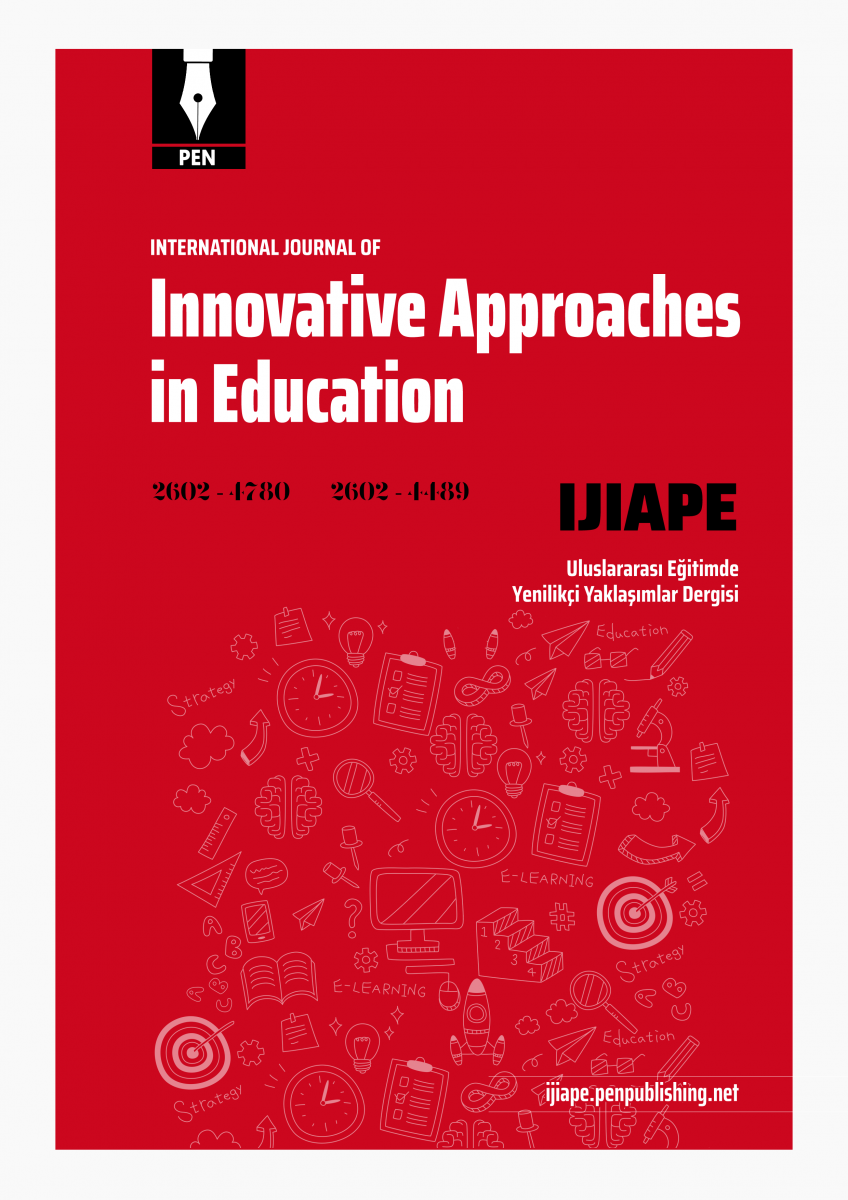- Abdug'afurovich, R. B. (2022). Innovation technologies in teaching English. American Journal of Social and Humanitarian Research, 3(6), 288-291. [Google Scholar]
- Ahmad, J. (2012). English language teaching (ELT) and integration of media technology. Procedia-Social and Behavioral Sciences, 47, 924-929. [Google Scholar]
- Aydin, S. (2014). Wikis as a tool for collaborative language learning: Implications for literacy, language education and multilingualism. Darnioji daugiakalbystė, (5), 207-236. [Google Scholar]
- Bahari, A., & Gholami, J. (2022). A Systematic review of current research on affordances and challenges of technology-assisted grammar learning. Computer Assisted Language Learning, 32(1), 125-148. [Google Scholar]
- Brigham, T. J. (2013). Smart boards: A reemerging technology. Medical reference services quarterly, 32(2), 194-202. [Google Scholar]
- Bump, J. (1990). Radical changes in class discussion using networked computers. Computers and the Humanities, 24(1-2), 49-65. [Google Scholar]
- Cabrera, P., Castillo, L., González, P., Quiñónez, A., & Ochoa, C. (2018). The impact of using" Pixton" for teaching grammar and vocabulary in the EFL ecuadorian context. Teaching English with Technology, 18(1), 53-76. [Google Scholar]
- Castillo-Cuesta, L. (2020). Using digital games for enhancing EFL grammar and vocabulary in higher education. International Journal of Emerging Technologies in Learning (iJET), 15(20), 116-129. [Google Scholar]
- Chhabra, P. (2012). Use of e-learning tools in teaching English. International Journal of Computing & Business Research, 3, 2229-6166. [Google Scholar]
- Cooper, M. M., & Selfe, C. L. (1990). Computer conferences and learning: Authority, resistance, and internally persuasive discourse. College English,52(8), 847-869. [Google Scholar]
- Dehham, S. H. (2021). Iraqi EFL students’ ability in acquiring English vocabulary by peer instruction technology. Turkish Journal of Computer and Mathematics Education (TURCOMAT), 12(9), 1634-1639. [Google Scholar]
- Dhaif, H. A. (1989). Can computers teach languages. English teaching forum, 27(3), 17-19. [Google Scholar]
- Dincer, N., & Polat, M. (2022). The use of flipped learning in EFL grammar instruction. Asian Journal of Distance Education, 17(1). [Google Scholar]
- Dooly, M. (2008). Telecollaborative language learning: A guidebook to moderating intercultural collaboration online. Peter Lang. [Google Scholar]
- Ehsani, F., & Knodt, E. (1998). Speech technology in computer-aided language learning: Strengths and limitations of a new CALL paradigm. Language Learning & Technology, 2(1), 45-60. [Google Scholar]
- Garrett, N. (2009). Computer‐assisted language learning trends and issues revisited: Integrating innovation. The Modern Language Journal, 93(s1), 719-740. [Google Scholar]
- Hirschel, R., & Fritz, E. (2013). Learning vocabulary: CALL program versus vocabulary notebook. System, 41(3), 639-653. [Google Scholar]
- Higgins, J. J. (1991). Fuel for learning: The neglected element of textbooks and CALL. CAELL Journal, 2, 3-7. [Google Scholar]
- Hunston, S., Francis, G., & Manning, E. (1997). Grammar and vocabulary: Showing the connections. ELT journal, 51(3), 208-216. [Google Scholar]
- Jiang, Y., Sabitha, R., & Shankar, A. (2021). An IoT technology for development of smart English language translation and grammar learning applications. Arabian Journal for Science and Engineering, 48(2), 2601-2601. [Google Scholar]
- Johnson, C. (1998). Battleground moves to the home front. TES Online Computers in Education, 20. [Google Scholar]
- Ko, M. H. (2019). Students’ reactions to using smartphones and social media for vocabulary feedback. Computer Assisted Language Learning, 32(8), 920-944. [Google Scholar]
- Krajka, J. (2000). Using the internet in ESL writing instruction. The Internet TESL Journal, 6(11). [Google Scholar]
- Krajka, J. (2021). Teaching grammar and vocabulary in COVID-19 times: Approaches used in online teaching in Polish schools during a pandemic. JALT CALL Journal, 17(2), 112-134. [Google Scholar]
- Nakata, T. (2008). English vocabulary learning with word lists, word cards and computers: Implications from cognitive psychology research for optimal spaced learning. ReCALL, 20(01), 3-20. [Google Scholar]
- Peterson, M. (1997). Language teaching and networking. System, 25(1), 29-37. [Google Scholar]
- Samuel, R. J., & Bakar, Z. A. (2007). Do teachers have adequate ICT resources and the right ICT skills in integrating ICT tools in the teaching and learning of English language in Malaysian schools?. The Electronic Journal of Information Systems in Developing Countries, 29. [Google Scholar]
- Sánchez-Gutiérrez, C. H., Robles-García, P., & Serrano, M. P. (2022). L2 Spanish vocabulary teaching in US universities: Instructors’ beliefs and reported practices. Language Teaching Research, 13621688221074443. [Google Scholar]
- Sandholtz, J. H. (1997). Teaching with technology: Creating student-centered classrooms. Teachers College Press, New York. [Google Scholar]
- Santos, D., & Miguel, L. (2019). The relationship between teachers' beliefs, teachers' behaviors, and teachers' professional development: A literature review. International Journal of Education and Practice, 7(1), 10-18. [Google Scholar]
- Sevy-Biloon, J. (2018). Integrating EFL skills for authentically teaching specific grammar and vocabulary. Studies in English Language and Education, 5(2), 175-184. [Google Scholar]
- Spitzer, M. (1989). Computer conferencing: An emerging technology. Critical perspectives on computers and composition instruction, 187-199. in Peterson, M. (1997). Language teaching and networking. System, 25(1), 29-37. [Google Scholar]
- Soruç, A., & Tekin, B. (2017). Vocabulary learning through data-driven learning in an English as a second language setting. Educational Sciences: Theory & Practice, 17(6). [Google Scholar]
|

